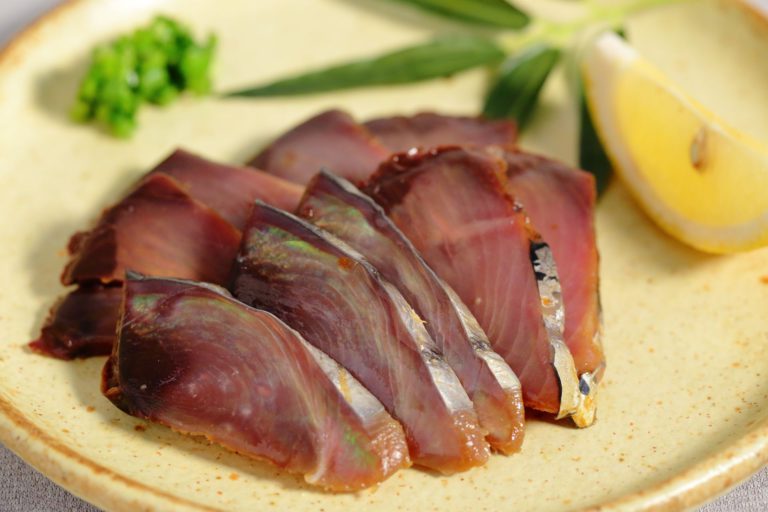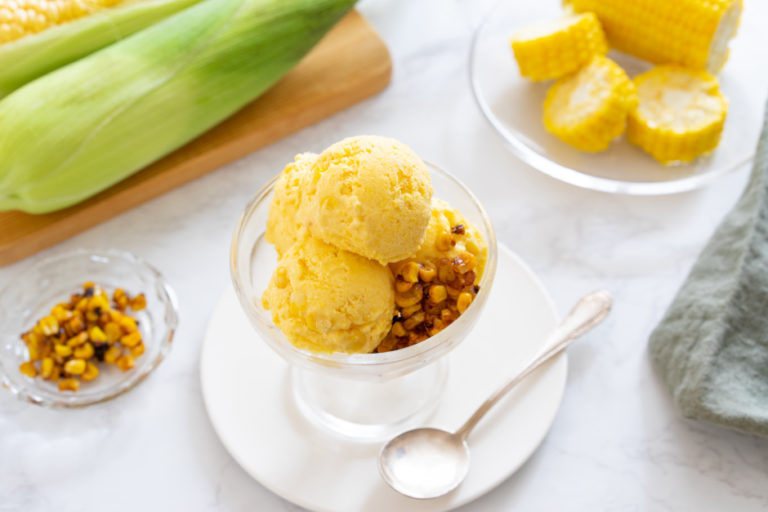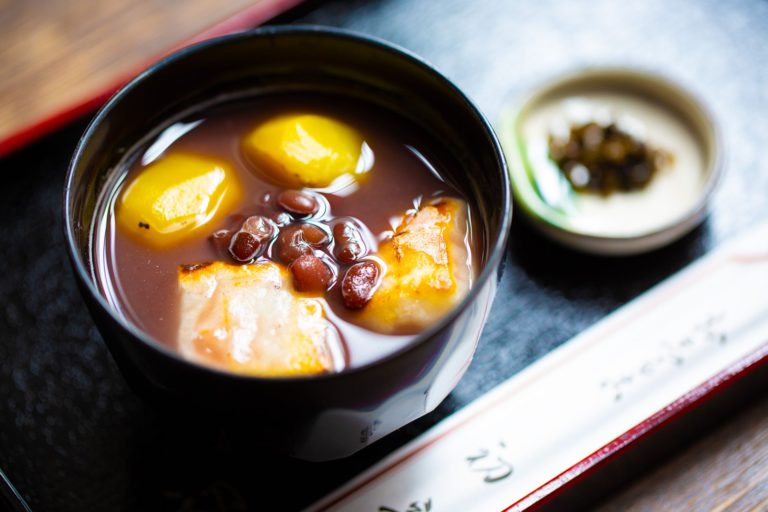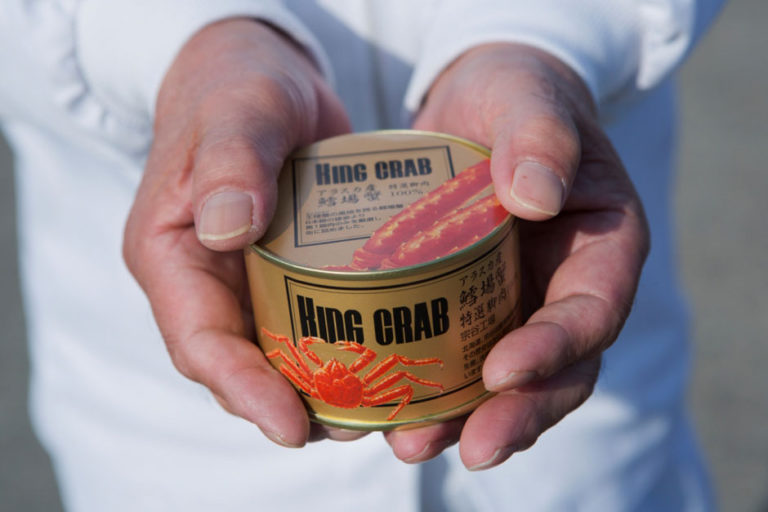The History of Aichi Wase Fuki (Aichi Early Butterbur) in its No.1 Production Area
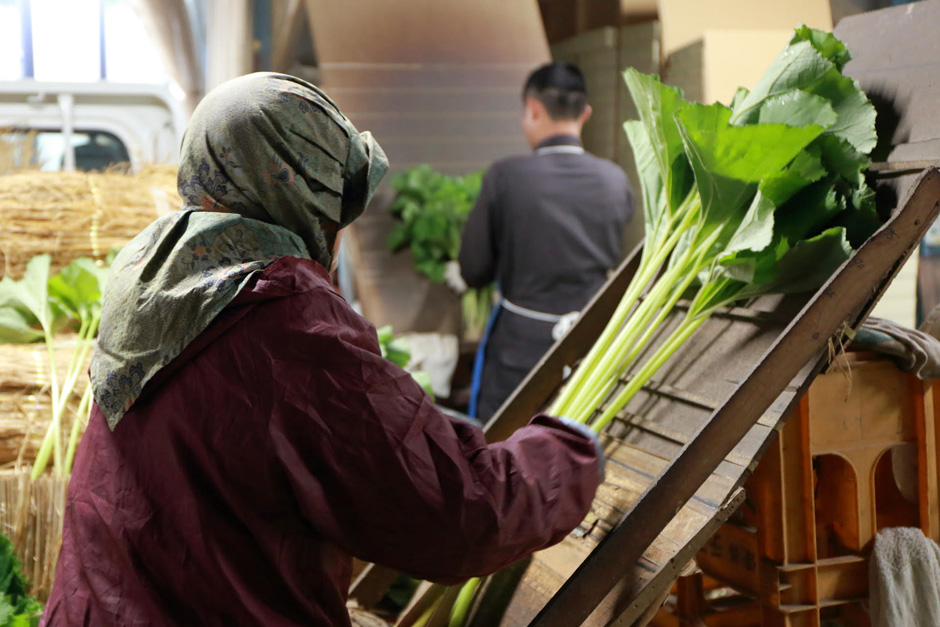
Aichi Wase Fuki—a Chita Peninsula tradition from the Meiji period
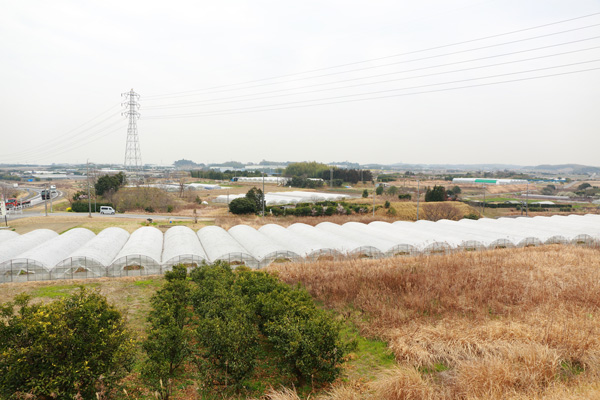
Fuki (Japanese butterbur) is a perennial plant that belongs to the plant family Asteraceae and can be found throughout Japan—from Hokkaido to Okinawa. It is an indigenous vegetable of Japan, which is a rarity. The fuki plant is said to have been harvested from the Heian period (794–1185) for food, with the younger buds used for medicine.
Fuki is said to have approximately 200 types, including wild species, but almost 70% of fuki on the market is Aichi wase fuki. This fuki species was discovered in the Meiji period, in the region that is now known as Tokai in Aichi Prefecture. The vegetable became widely popular in neighboring com-munities immediately after the head of a local village successfully grew it. What is more, the area’s farming irrigation—completed in around 1960—also boosted the vegetable’s popularity.
Ever since this, the Chita Peninsula has been the production center for fuki. The production output of JA Aichi Chita, which is the center of Chita Peninsula farmers, makes up approximately 40% of Ja-pan’s total output. The largest portion of fuki farming is in Tokai and Chita.
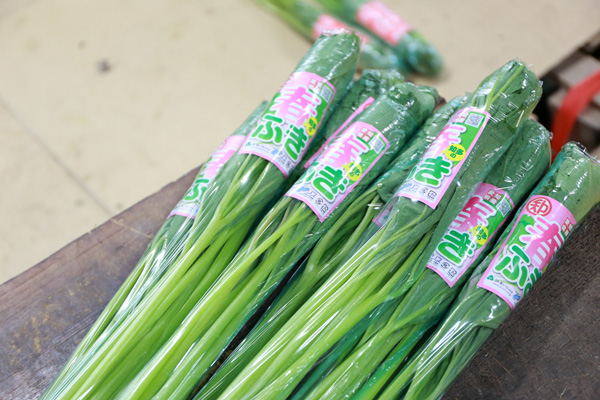
“The Aichi wase fuki has soft, edible stems with a slightly crunchy texture,” says Yuji Kojima from JA Aichi Chita.
According to Kojima, the harvest methods of fuki have also been changing over its long history.
“There used to be only one harvest in the spring when farming was done in open fields. Now, most farming is done in greenhouses, allowing for fuki to be harvested from autumn to spring.”
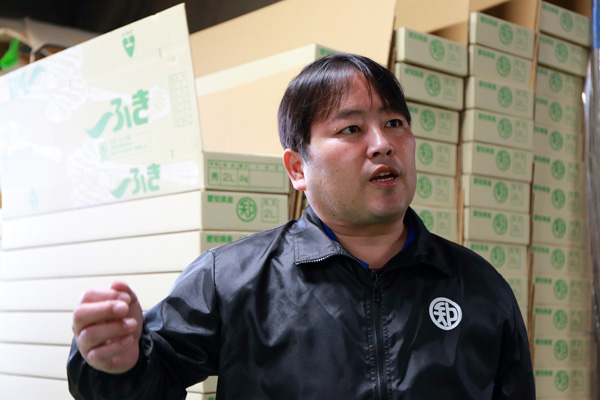
When stumps that have been frozen and stored over the summer are planted in August, the plants think it is spring and sprout. This allows for harvesting to start around October. The warm environ-ment of greenhouses blocks out winter cold, allowing harvest to continue to spring.
The fuki harvested from October to the following January are aki fuki (autumn butterbur), and the fuki harvested from February to May is haru fuki (spring butterbur). According to Kojima, “Haru fuki has a fragrance and is similar to the ‘seasonal’ taste of open-field fuki.”
A visit to a farmer with 50 years’ farming experience
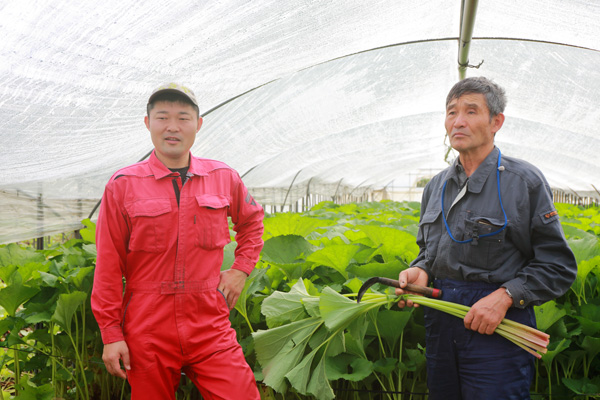
We made a visit to Toshinobu Takeuchi, a fuki farmer with a career spanning 50 years. Takeuchi’s wealth of experience has made him the chairman of the Fuki Division in the Chita Horticulture Pro-motion Society, which consists of farmers in the Chita Peninsula area.
Takeuchi has 35 greenhouses and puts much effort into fuki farming, along with his son Takenori. The peak harvest season is March, during which they have no time to rest.
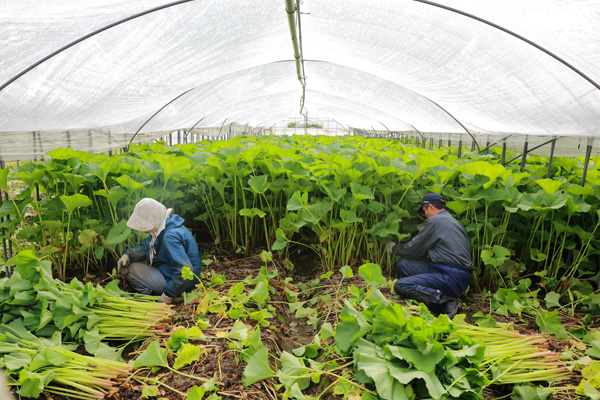
“Ever since harvesting fuki in the spring and fall became possible, we are busy year-round. I used to farm mandarin oranges and rice after inheriting the farm, which was the family business. However, after trade liberalization started in the 1970s, I decided to farm only fuki,” says Toshinobu between reaping fuki stems.
Takenori deftly wraps the harvested fuki into komo, which is matting made by weaved straw. Komo was used to prevent frost on fuki plants in the past, but as frost measures became unnecessary, it is currently used as cushioning material.
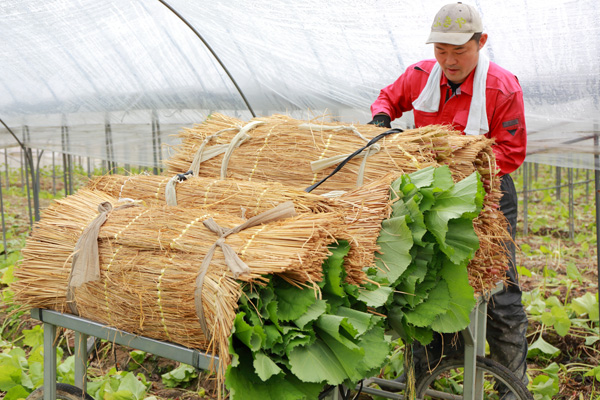
The harvested fuki is transported to a work area, which is at the Takeuchi house. Here, the vegetable is categorized per size—fuki 1,000 mm or longer are L-size, and fuki 1,150 mm or more are 2L-size. In this manner, Takenori skillfully sorts the harvest.
“The methods of growing fuki have not changed much since I began farming 18 years ago. However, the sorting and packing routine has gone through much trial-and-error for more efficiency because we want to ship out as many cases as possible.”
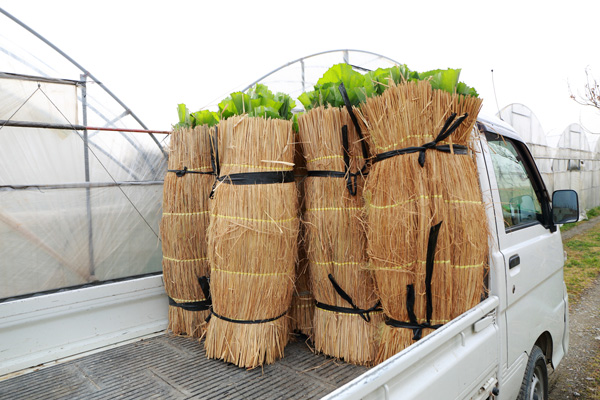
After sorting is completed, the fuki is wrapped in cling-wrap and packed into cardboard boxes. Fuki plants are extremely susceptible to breaking, and cannot be used as a product when damaged. This is why everything from harvest to packaging needs to be done with great care by human hands. It is in-credible how this farm can ship out over 100 boxes containing four kilograms of fuki a day.
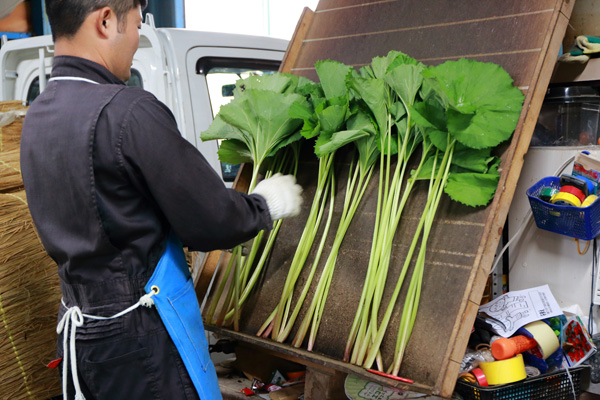
Even with shipping this much daily, the production amount of fuki on the Chita Peninsula has been decreasing every year. Last year, the JA Aichi Chita saw 550,000 boxes (four kilograms per box) of fuki shipped, but this is only one-fourth of the quantity of roughly 20 years ago. The 200 fuki farmers have been reduced to only 70.
“The waves of the aging society and declining birthrate are hitting us, as there is nobody available to carry on the farms. Although fuki is produce that provides a good yield, stabilizing the crop may be challenging for new farmers.”
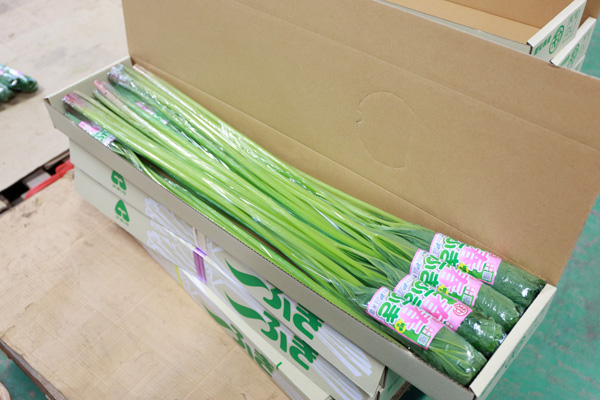
Another reason for decreasing production is the changes in eating habits of the Japanese.
“These days it is rare to see fuki dishes on a standard household’s dinner table. The famous children’s song Obento-bako no Uta (the lunch box song) has a line featuring fuki. That is how popular the veg-etable used to be in the past.”
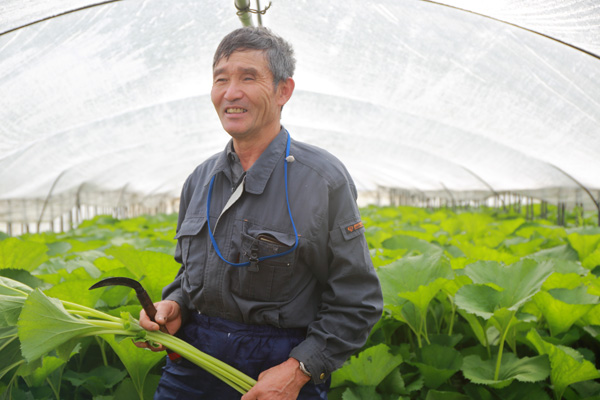
Toshinobu speaks a matter-of-factly with a serene expression, and adds “We need to stay strong here, as the Chita fuki is the best in Japan.”
The Fuki Division and JA Aichi Chita have been developing new packaging for smaller portions, and implementing sampling at supermarkets to promote fuki to the consumers. They are attempting a comeback, with the goal of having fuki on everyone’s table once more.
Aichi Wase Fuki (greenhouse-grown)
Source:Yuji Kojima, JA Aichi Chita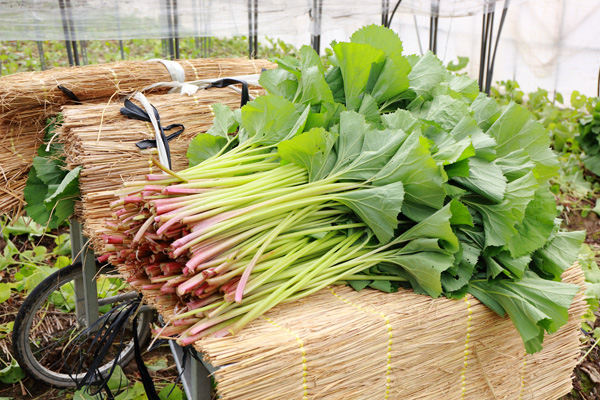
Peak Season
Haru fuki : February to May
Aki fuki : October to January
Tips
Fuki with green leaves and stems that are sturdy and straight
How to enjoy them
Along with the staple simmered dishes and kyarabuki (fuki boiled in soy sauce), fuki kakiage (mixed tempura) is also recommended. Remove the fuki strings and mince before mixing with ingredients such as carrots, onions, and shrimp. Deep-fry the mixture to make a kakiage. The fuki aroma stays strong, even if it is deep-fried thoroughly. The modern fuki is now much milder than in the past, and there is no need to remove the harsh taste before cooking items such as kakiage.
*More fuki recipes can be found on the JA Aichi Chita Official Webpage.
https://www.agris.or.jp/food/recipe/

